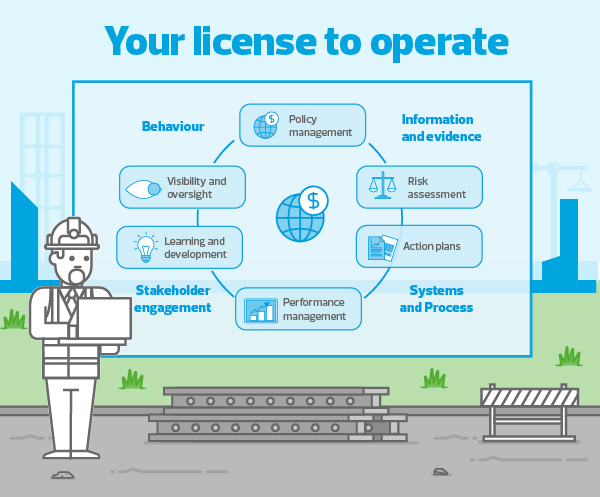25 January 2022
We live in uncertain times. Construction sector challenges, such as managing labour shortages, material pricing and procurement, protracted contracts and embracing new technologies, all create business uncertainty. These are compounded by the macro issues we face – be they economic, societal, environmental, health or political, to name a few.
It’s not easy to manage ‘expected outcomes’ in a difficult environment. But when the ‘expected’ also becomes ‘uncertain’, having the ability to act with confidence based on timely and accurate insight into:
- what has happened;
- why it happened; and
- how it could have been prevented
is required for managing risk, predicting outcomes and learning from mistakes.
When the unexpected does happen, the right systems and processes (properly maintained with the right skills) allow businesses to:
- keep tabs on the uncertainties, while ensuring that current activities are achieving what they’re meant to; and
- understand and manage their risks across all of its functions.
The consequences of getting these wrong are well known – the construction sector has experienced several high-profile corporate failures over the last decade.
License to operate
The ‘license to operate’ framework sets out the key mechanisms all businesses should have in place to ensure they manage risk effectively:

Applying this framework to environmental protection, a focus area for the construction industry, brings to light how it works in practice by asking key questions about each of its aspects:
- Do you have a carbon reduction policy? Has it been properly communicated? How well is it understood?
- Do you have adequate risk assessment in place across your business, which complies with the latest legislation? Where are the main risks and how are they being managed?
- Do you have action plans in place to improve the way environmental protection is managed across the business? How are these actions communicated to those responsible and how do you measure actions taken?
- Do you have performance metrics in place that measure environmental protection management? How do you collect the data to inform the measures? Where are the problem areas?
- Do you have in place learning and development across the business to educate on these issues? Who has undertaken the training? How do you know what has been learned and that it is understood?
- Do you have suitable mechanisms for oversight and visibility of ESG impact? Where is this in the business? How do you monitor and report on progress?
Environmental protection is just one example. The ‘license to operate’ model can just as easily be applied to health and safety, modern slavery, building regulations, contract performance, tax compliance (eg IR35 regulations), diversity and inclusion, asset usage and safeguarding etc. The same questions can be asked in the context of license to operate – just put the activity at the centre of the license to operate wheel and go through each component.
Good governance and risk management should be at the centre of all businesses, whether SME or large corporate. The ability to capture, monitor and report on these risks allows a business to identify uncertainties and manage the risk around them. In addition, the collection of this data enables businesses to predict outcomes. As we move towards a digital environment, real-time information and decision making will enable the construction industry to better understand the changes around it and increase productivity.
Our clients are increasingly asking how to manage business risk. Be they business owners, investors, stakeholders, regulators or customers, they want to know and be assured that businesses are taking this seriously and acting responsibly.
We can help
Want to find out more on the license to operate and explore Insight 4GRC, RSM’s cloud-based risk management software suite? Contact Matt Humphrey for more information.








